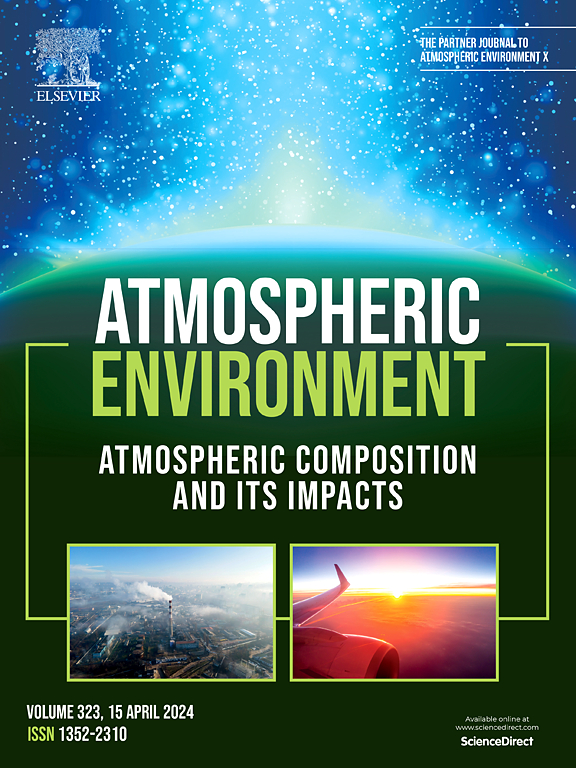复杂气溶胶的宽带光分析仪:表征和首次应用
IF 3.7
2区 环境科学与生态学
Q2 ENVIRONMENTAL SCIENCES
引用次数: 0
摘要
本文介绍了一种测量气溶胶粒子光谱光吸收的新仪器。BLAnCA(宽带复杂气溶胶光分析仪)是一种自动实验室仪器,用于离线测量收集在合适介质上的气溶胶。BLAnCA配备了白光光源和高分辨率光谱仪,测量范围在375到1000 nm之间,光谱分辨率为5 nm。这样就可以确定采样气溶胶的吸收特性的精细结构,从而提高源分配的鲁棒性和范围,以及对气候相关特性(如气溶胶质量吸收截面)的评估。新仪器已在多波长吸光度分析仪上进行了验证,吸收系数测量值之间的一致性高达99%。在标准EU (EPA)取样条件下,BLAnCA的吸收系数检测限估计为1.20 Mm−1 (2.70 Mm−1),如果考虑到1000 nm处4.7 m2−1的质量吸收截面,则对应于元素碳的检测限约为1.3 μg cm−2。该仪器已被用于表征几种类型的气溶胶样品,每种样品都有其独特的吸收特征,这表明BLAnCA有可能根据其光学特性识别不同种类的颗粒物。本文章由计算机程序翻译,如有差异,请以英文原文为准。

The broadband light analyzer of complex aerosol: characterization and first applications
We introduce a new instrument to measure spectral light absorption by aerosol particles. BLAnCA (Broadband Light Analyzer of Complex Aerosol) is an automatic laboratory instrument for offline measurement of aerosol collected on suitable media. BLAnCA is equipped with a white light source and a high-resolution spectrometer, and measures in the range between 375 and 1000 nm with a spectral resolution of 5 nm. This allows for the determination of fine structure of the absorption properties of a sampled aerosol, which can lead to improvement in the robustness and scope of source apportionment and the evaluation of climate-relevant properties such as the aerosol mass absorption cross-section. The new instrument has been validated against a multi-wavelength absorbance analyzer, obtaining an agreement of up to 99 % between absorption coefficient measurements. The absorption coefficient limit of detection for BLAnCA has been estimated at 1.20 Mm−1 (2.70 Mm−1) for standard EU (EPA) sampling conditions, corresponding to an elemental carbon detection limit of about 1.3 g cm−2, if a mass absorption cross-section of m2g−1 at 1000 nm is considered. The instrument has been used to characterize several types of aerosol samples, each with its own distinct absorption features, which show the potential for BLAnCA to identify different kinds of particulate matter based on their optical properties.
求助全文
通过发布文献求助,成功后即可免费获取论文全文。
去求助
来源期刊

Atmospheric Environment
环境科学-环境科学
CiteScore
9.40
自引率
8.00%
发文量
458
审稿时长
53 days
期刊介绍:
Atmospheric Environment has an open access mirror journal Atmospheric Environment: X, sharing the same aims and scope, editorial team, submission system and rigorous peer review.
Atmospheric Environment is the international journal for scientists in different disciplines related to atmospheric composition and its impacts. The journal publishes scientific articles with atmospheric relevance of emissions and depositions of gaseous and particulate compounds, chemical processes and physical effects in the atmosphere, as well as impacts of the changing atmospheric composition on human health, air quality, climate change, and ecosystems.
 求助内容:
求助内容: 应助结果提醒方式:
应助结果提醒方式:


